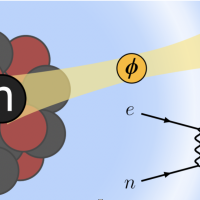News
Searching for dark matter by probing an ultranarrow optical transition in Ytterbium
The Vuletic ion lab at MIT has been searching for new dark matter candidates by measuring small shifts between atomic transition frequencies in different isotopes of Ytterbium. Measuring shifts on at least two transitions allows the researchers to plot the data in a “King Plot”, which can reveal the presence of both higher-order nuclear physics effects and beyond-standard-model effects in the form of non-linearities. In their most recent paper, the researchers measured these shifts on the ultranarrow 467-nm octupole transition in five different isotopes of Ytterbium and combined their data with measurements they had previously taken on the 411nm and 435nm quadrupole transitions.
The resulting analysis revealed evidence of two distinct sources of nonlinearity with 3σ confidence (this significance increased to >4σ when the researchers included in their analysis a further two transitions measured in neutral Ytterbium by physicists in Kyoto and Mainz). The researchers identify the main source of non-linearity as emerging from differences in the 4th nuclear charge moment between isotopes, a higher-order nuclear effect that had not previously been probed with high precision. The second source of non-linearity cannot be explained by the expected next-largest effect within the standard model, and the researchers discuss its possible origin.
